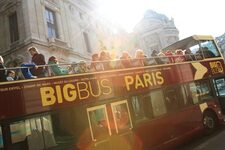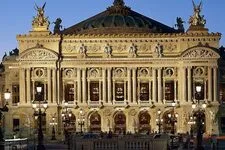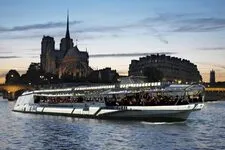Alexander III Bridge

Crossing the Seine and connecting the 7th and 8th arrondissements of Paris, the Alexandre III Bridge represents a true message of peace between France and Russia.
A Franco-Russian Message of Peace
Inaugurated for the 1900 Paris Exposition Universelle, the first stone of the bridge was laid by Tsar Nicholas II of Russia himself in 1896, to symbolize Franco-Russian friendship. This friendship was established in 1891 by the signing of the alliance concluded between Emperor Alexander III - the father of Nicholas II - and the President of the French Republic at the time, Sadi Carnot.
On the column located on the right bank downstream, one can read the inscription "On April 14, 1900, Emile Loubet, President of the French Republic, opened the Exposition Universelle and inaugurated the Alexandre III Bridge." With a length of 154 meters and a width of 45 meters, this enormous bridge connects the esplanade of the Invalides to Wilson Churchill Avenue, which leads to the Champs-Elysées, passing in front of the Petit Palais and the Grand Palais, which were also built for the same Exposition Universelle.
A Decoration with Multiple Meanings
The decoration of the Alexandre III Bridge is particularly precious and has been classified as a historical monument since 1975. Pylons 17 meters high rise at each of the four ends of the bridge. Their tops are all adorned with bronze Pegasus, each telling a different story. In the center of the bridge, two hammered copper frontal motifs adorn the keystone of the arch. Upstream, the Nymphs of the Seine surround the arms of Paris. Downstream, the figure of the Neva and its Nymphs accompany the gilded arms of Russia. Four hammered copper sculptures, representing water genies, are placed at the foot of the pylons on the parapet. More than a century after its inauguration, the Alexandre III Bridge has undergone virtually no transformation except in its color. It is now pearl gray, which was its original color. The Alexandre III Bridge is also remarkable for the magnificent view it offers to passersby, on one hand over the esplanade of the Invalides, and on the other hand over the Petit Palais and the Grand Palais.
A Witness to History…
Between April and November 1900, during the Exposition Universelle, the bridge received more than 50 million spectators. Several replicas were then built in various places around the world, including Las Vegas. Used as a natural backdrop by many filmmakers, it is the location where iconic scenes take place, such as those in The Cry of the Cormorant, in the evening, above the junks of Michel Audiard (1970), in Arsène Lupin by Jacques Besnard, or in Angel A by Luc Besson (2005), in which the heroine and hero meet and reunite on the Alexandre III Bridge.
The Alexandre III Bridge thus easily transcends time. During the days of the liberation of Paris in August 1944 and during the fire at the Grand Palais, the battles that took place in the vicinity left some traces on the structure, mainly on the sculpted lion. In 1995, to celebrate the centenary of the laying of the first stone, a gigantic restoration operation was undertaken.
""
Activities in the Surroundings

Big Bus Paris

Guided tour of Opera Garnier
